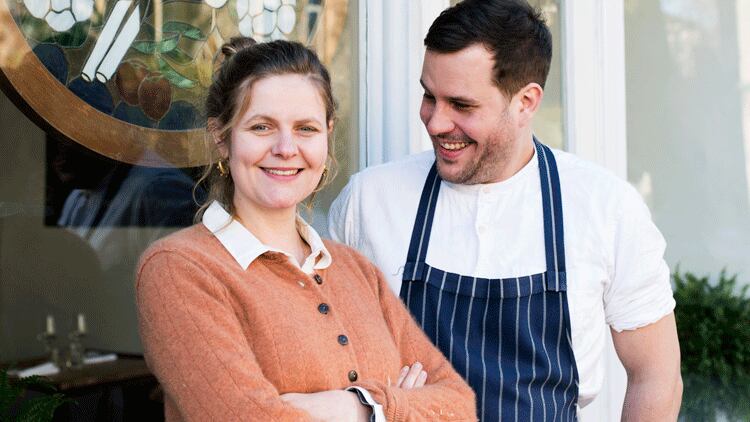Jan and Mary Ostle’s farm is so wet that a water shrew has taken up residence in the shed. Three weeks of near constant rain have rendered the heavy, clay-based soil close to untraversable. “Stick to the grassy bits,” Mary councils as we slip and slide our way around their 1.5-acre smallholding.
Close to the village of Barrow Gurney, the farm supplies nearly all the vegetables, fruits and herbs for the pair’s Wilsons restaurant in nearby Bristol. Mary, who has a degree in biodynamic agriculture, oversees the growing operation while Jan, whose cooking CV includes Restaurant Gordon Ramsay and The Square, heads the kitchen.
Wilsons – which appears on Restaurant’s list of the top 100 restaurants in the UK - might just be the UK’s most extreme practitioner of farm-to-table cuisine. While there are comparisons to be made with the likes of Simon Rogan’s Umbel restaurant group, Tommy Banks’ operation in North Yorkshire and Dan Cox’s Crocadon in Cornwall the Ostle’s ‘ground up’ approach is more ideologically driven, less regimented and has a much smaller footprint (the pair employ just 20 people across their farm, restaurant and pandemic-born bakery).
“We’re totally product-led in a kamikaze way. We regularly fuck up. Crops fail, preserving goes wrong…” says Jan, who is currently in the doghouse for getting his mustard yellow 2003 Land Rover stuck in the farm’s hopelessly waterlogged earth. “I got mine stuck, called my mate to get me out then he got stuck. We had to get a farmer with a Massey Ferguson tractor down to help us. He nearly got stuck too. We’d have needed a Chinook if that had happened. The ground is fucked.”
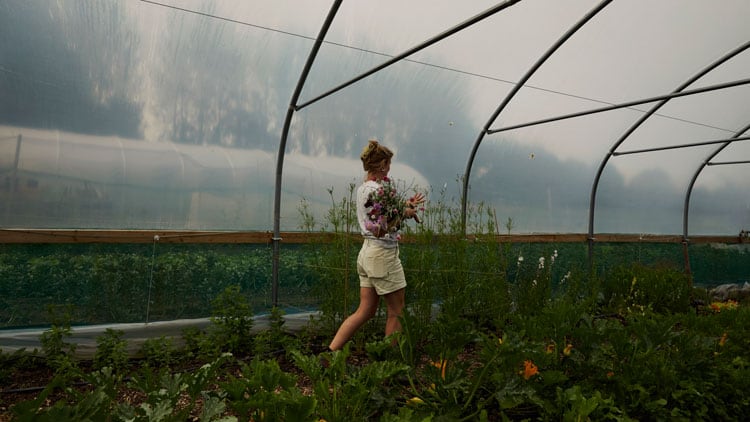
Living hand to mouth
Being nearly totally reliant on one small farm for fruit and veg is rarely straightforward – there is either too little coming out the ground or far too much – but the past month or so has been especially tough.
By the pair’s own admission, the place is not looking its best. A lot of the ground is covered with black plastic sheets – Mary’s way of discouraging grass and weeds outside the growing season – and the only produce visible is a small patch of skinny-looking leeks. Things start to look up when we enter the farm’s two large polytunnels which, along with endless trays of soft herbs, contain promising looking chard, juvenile carrots, spinach, and the beginnings of some broad beans.
“When an ingredient is over, we have to change the menu. There’s never been a plan B. It’s do or die down here”
“Now more than ever, the kitchen has to work around the farm and use what has been preserved from last year,” says Mary, who runs her plot in accordance with regenerative farming principles using hand tools only. “The weather has changed dramatically since we set up the farm five years ago. The growing season starts later and later because it’s so wet, and then suddenly it’s hot and dry, which also causes us headaches.”
“We don’t just get onto the phone to a supplier,” adds Jan. “There is no other option, when an ingredient is over, we have to change the menu. There’s never been a plan B. It’s do or die down here.”
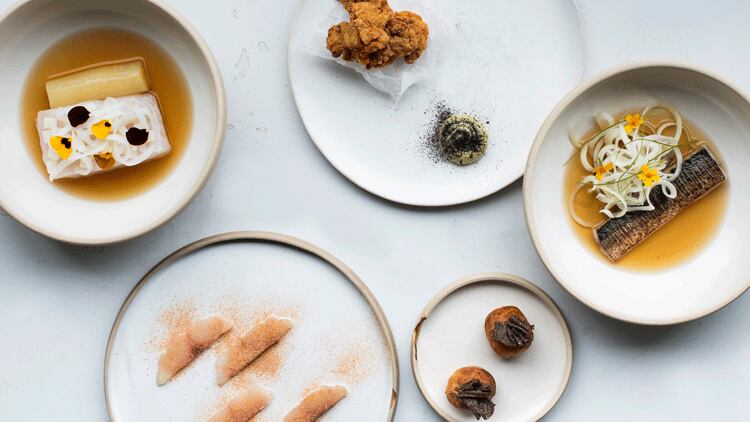
Buying from kindred spirits
Wilsons produces nearly all of its fruits, vegetables and herbs (a few exceptions are made for climatic and practical reasons, including lemons, shallots and garlic). Water shrews aside, there are no animals on the farm, although that may soon change with Jan keen to get himself some Mangalitsa pigs and Mary eying up some sheep.
Wilsons' proteins – and a few other odds and ends – are sourced from a small circle of usually very local suppliers. The pair gravitate toward kindred spirits that are uncompromising about their ethics, even if that sometimes means supplying their customers in a haphazard manner. “We don’t have a relationship with any suppliers that can get me 150 portions of X exactly when I want it. That’s just not how we work,” Jan says.
Take part time deerstalker Matt Roberts, one of Wilsons' longest standing local suppliers. The relationship started with a single roebuck presented Goodfellows-style in a bin bag in the back of a car and has blossomed from there.
“He’ll either have none or too many, so when I do get them, I need to hang them myself,” says Jan, who has been known to shoot the odd deer himself. “I’ll also take ones that have (mistakenly) been shot in the chest, which limits our options. We have a circle of good food around us that we are committed to using.”
When Wilsons does work with larger, more organised suppliers Jan often seeks to do so in an unconventional way, ferreting out gaps in the supply chain to offer his guests something distinctive and more ethically sound. For example, Wilsons recently completed a project with poultry supplier Steam Farm taking over-the-hill laying hens.
“The broths they created were amazing. I look for the bits of the supply chain that get forgotten about. I want to find new stories.”
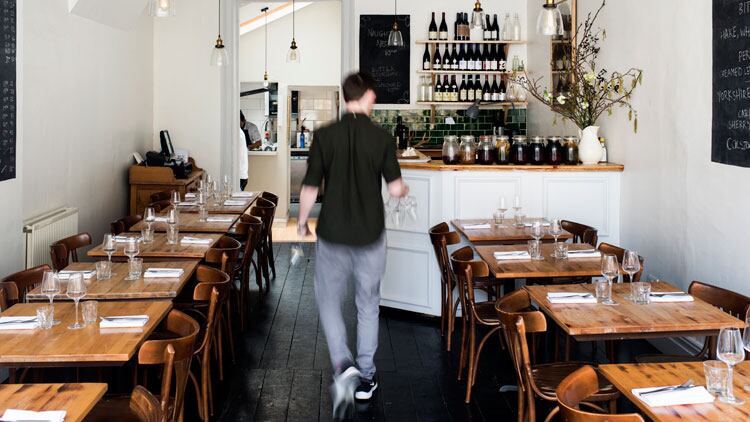
A foie gras and caviar-free zone
While the quality of the produce is obviously a big factor when choosing suppliers, ethics come first. “Really good foie gras is delicious. The production ethos does not necessarily match up with how good something is to eat,” says Jan, who would not countenance putting caviar on his menu either.
“I like caviar but it’s fucking bonkers. To kill an animal just for its eggs? Come on. I would love someone to do a dish of caviar relativity that has a portion of sturgeon alongside the proportional amount of caviar you get from said fish. We are interested in the impact suppliers have socially and on their environment. We want to know if we are aligned.”
“We like and respect the people we work with. It’s more than just a business transaction,” adds Mary, who applies comparable criteria to Wilsons’ low intervention wine programme.
Wilsons' polices (the Ostles find the notion of their restaurant having an official policy on anything hysterical) preclude a lot of things other restaurants take for granted. Take the large boxes of chicken and veal bones sourced from large suppliers that are the basis of nearly every ambitious restaurant’s sauces.
“We like and respect the people we work with. It’s more than just a business transaction”
“We were using them, but recently I just said ‘this has to stop’” Jan says. “I love a sticky, shiny sauce. It makes me feel grand. But I couldn’t stand those big boxes full of frozen bits of miserable dead animals. All the sauces we make are now taken solely from the proteins that end up on people’s plates.”
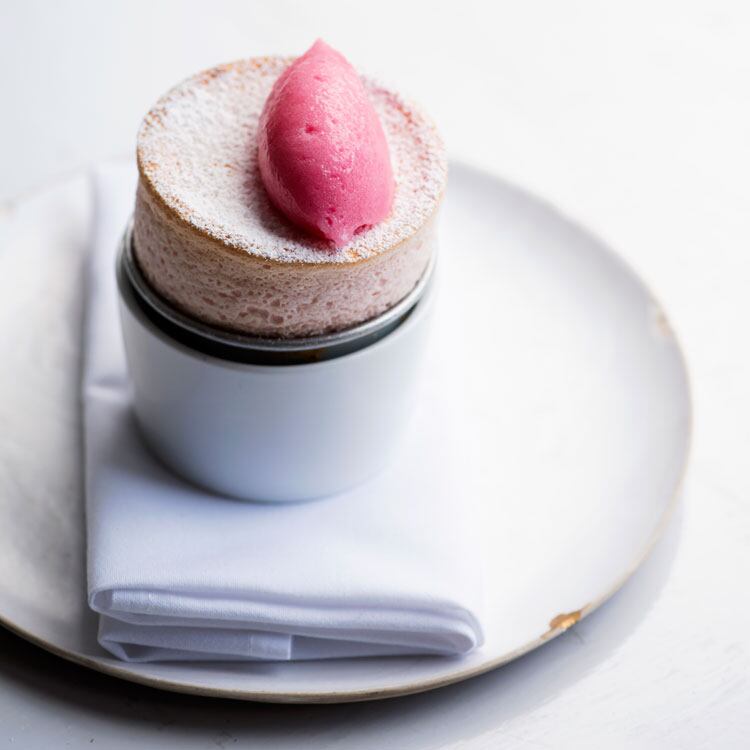
Working within strict parameters
Nearly exclusively using produce grown on the farm, only buying proteins from trusted suppliers and avoiding products that most kitchens would deem essential is both a blessing and a curse.
“If you set yourself very strict parameters of how you work, it quickly defines what you are and how you cook,” Jan explains. “It’s not easy. You must be prepared to tear it all down and start again twice a week. You have to force things together and make them work. It makes us creative but it’s hard.”
In the hands of a less skilled chef, working with such a restricted palette of ingredients – and often being pressured to clear out the fridge – would be a disaster but Jan has the requisite talent to make it work.
Take a recent venison dish. Usually, a main course venison dish demands a rich, sticky jus based on a veal or dark chicken stock. With this off the cards due to his ethical objection to bought-in bones, Jan’s solution for a suitably dank – his word – accompaniment is a mole negro made with the bones of the animal and dried vegetable peelings from the farm.
“If you set yourself very strict parameters of how you work, it quickly defines what you are and how you cook”
Another highly successful dish that exemplifies Wilsons' thrifty approach is dry-aged trout served with a rich, bisque-like sauce made with some langoustine heads the kitchen had “laying around” offset with a kimchi made with brassica offcuts.
Other dishes on the tasting menu include a sorbet of oyster and rhubarb; last year’s (dried) celeriac rehydrated and wrapped around smoked crème fraiche and hazelnut served in a 48-hour onion broth; and an intense puree of herbs from the farm expertly contrasted with meringue.
Given Wilsons largely passive approach to procurement, conventional ahead of time menu development is a daydream for Jan. “I wish I was one of those chefs that develops dishes, takes pictures of them and writes menu briefs. But I’m not.”
“I don’t know if either you or I could operate in anything other than chaos,” says Mary. “I love you,” is Jan’s affecting response.
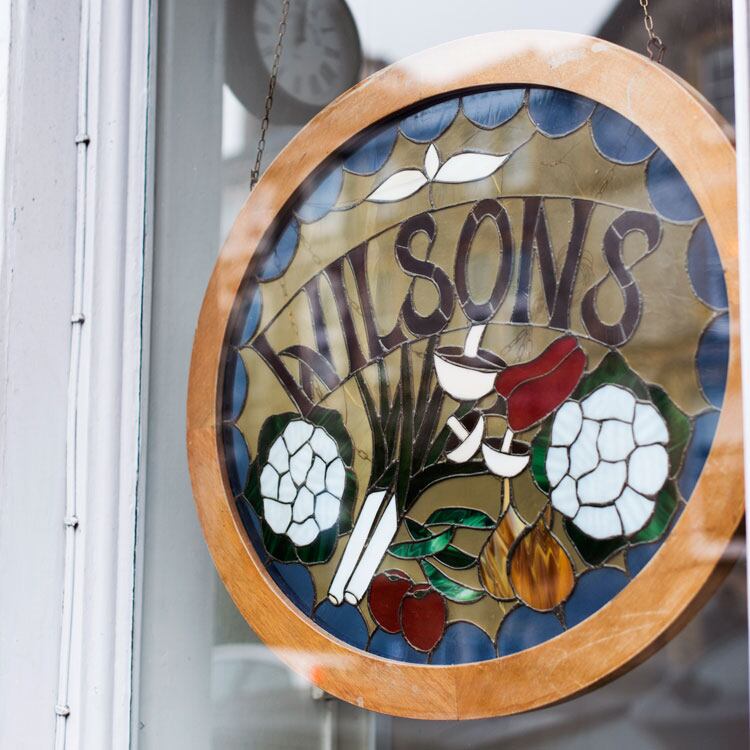
A sign of things to come
The Wilsons name is inherited from a restaurant Mary’s parents ran in West London. As one would expect given that it opened in the 1980s, the original Wilsons bears little resemblance to the Wilsons of today. Indeed, the sole reason for taking the name was the availability of two – admittedly beautiful – stained glass signs.
Though the family restaurant had closed by the time she was old enough to work there, Mary followed in her parents' footsteps, working front of house at West London restaurants and gastropubs. She became interested in growing during her gap year and, upon her return to the UK, completed a degree in biodynamic agriculture.
The son of two academics, Jan grew up in Oxford. Having not done brilliantly at school, he took a pot washing job which led to some entry level cooking jobs in local restaurants, including Clinton Pugh’s The Lemon Tree. Jan was hooked and – clearly never one to do things by halves – blagged himself a job at Restaurant Gordon Ramsay.
“I’ve done my time in good kitchens, but I was a total fucking nuisance. I bounced around, burnt bridges and generally messed things up”
“I had no idea what I was doing. I was woefully under qualified. But I learnt about hard work and showing the fuck up. Those are two of the hardest lessons to teach. I’m deeply grateful they were taught to me, and in such an efficient way, too.”
A string of jobs in other top kitchens followed including Phil Howard’s The Square and Tom Kerridge’s The Hand & Flowers. Jan is a little uncomfortable when talking about his formative years because they were characterised by serious problems with drink and drugs. “I’ve done my time in good kitchens, but I was a total fucking nuisance. I bounced around, burnt bridges and generally messed things up.”
Jan was good enough to get his foot in the door but – with the exception of The Square – didn’t tend to stick around too long. “Eventually I’d make my situation untenable. I was always on time, but I’d often be in a state and unable to do what was expected of me. But I loved cooking so always went back for more.”
Jan was still drinking and using when he and Mary – who met while working at Notting Hill restaurant The Shed - opened Wilsons in 2016 but knocked both vices on the head a couple of years later.
“I asked for help, and I got it. Wilsons became the clean sheet. The structure and intensity was such that I had to be somewhat compos mentis even when I was using. And when the drinks and drugs stopped, I fully threw myself into work. This restaurant saved my life.”
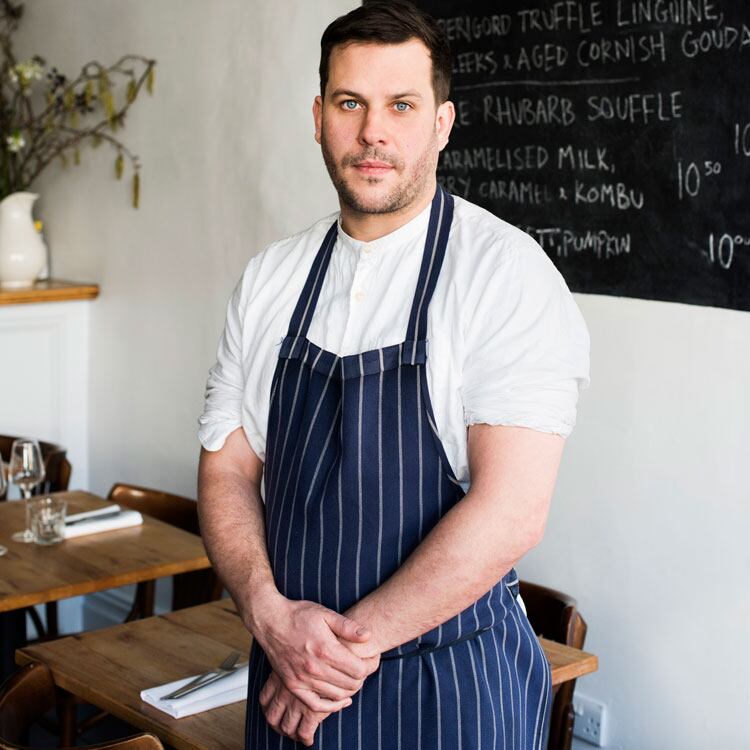
A neighbourhood restaurant with national profile
Based in the city’s largely residential Redland area, Wilsons is one of a small proportion of restaurants in the country to have achieved the contradictory status of being a neighbourhood restaurant with national profile.
“In general, we act like a neighbourhood restaurant. We are a small place that turns our tables twice a night, although we sometimes struggle to fill it. But we are better known now and talked about in the right circles. That has the potential to be slippery slope.”
“We believe it’s morally wrong to price people out of a restaurant that’s in their city, staffed by people from their city and uses food grown in their city. Good food can and should be democratic”
Wilsons is one of the most affordable venues on Restaurant’s top 100 list offering its six-or-so-course tasting menu for £68 alongside a set lunch menu that’s available Wednesday to Friday for just £30.
“We did not want to have a restaurant we couldn’t afford to eat in ourselves,” says Mary. “We were in our mid-20s when we opened Wilsons and we’d just had our first baby. We had very little.”
“We’re not cooking for oligarchs or people with Bentleys,” adds Jan. “The odd one does come in but feels uncomfortable and leaves quickly. We believe it’s morally wrong to price people out of a restaurant that’s in their city, staffed by people from their city and uses food grown in their city. Good food can and should be democratic.”
The pair’s commitment to providing an egalitarian dining experience is commendable and worrying in equal measure. Last year, the restaurant’s tasting menu was priced at £60 but the Ostles were forced to add an extra £8 when they lost money for several months in a row following a sudden increase in costs.
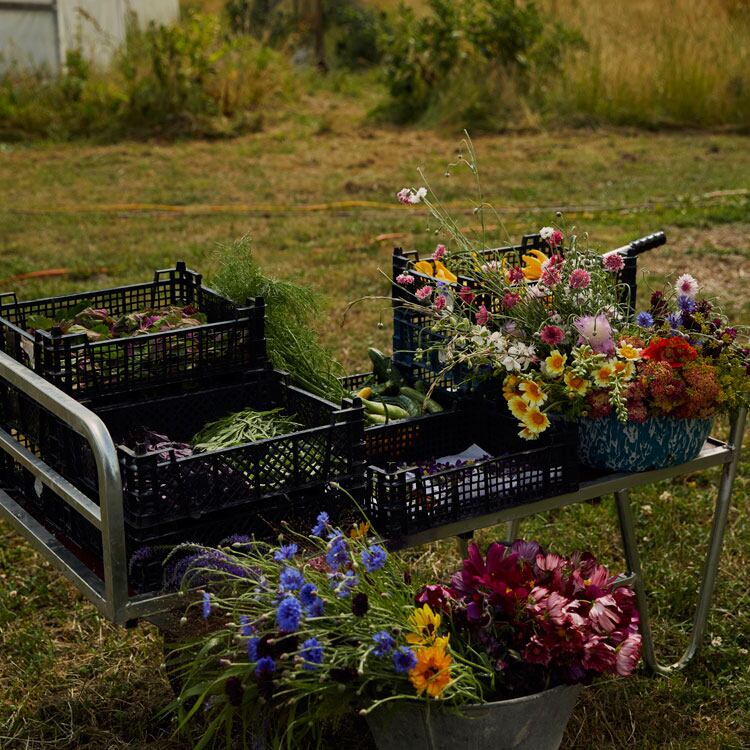
Making compromises to keep prices low
Alongside it nearly causing them to go bust, Jan and Mary are the first to admit that their restaurant’s stubbornly low price point brings with it a few compromises. First among these is that the 24-cover restaurant has to turn its tables once at dinner, meaning that the majority of its evening customers have a two-hour window in which to eat their meal. “If we want to keep our price point below £70 for food that’s what we need to do,” says Mary matter-of-factly.
It also precludes the use of many high-end ingredients to the point that Jan’s moral objection to foie gras and caviar is almost a moot point because he couldn’t afford them anyway. “We’re not buying beautiful Anjou pigeons or turbots that weigh more than 5kg either,” he laughs when this is put to him. “We do make sacrifices. But I believe we serve very high-quality ingredients that are often unique to us.”
“Mass agriculture is taking over to the point that quality small scale farming is increasing inviable, especially when selling to restaurants at market value”
Unusually, the Ostles have opted to run their three businesses as one symbiotic entity. This results in an oddly shaped balance sheet on which food costs are very low – especially given the quality of ingredients the kitchen is using – but labour costs are astronomical.
“Separating out the three businesses would be the wrong approach,” Mary explains. “On a farm, all the investment happens in the winter. It’s only in the summer that things start to make sense. Mass agriculture is taking over to the point that quality small scale farming is increasing inviable, especially when selling to restaurants at market value. To our minds, the most radical thing we can do is show that the model can work. We have a restaurant and a farm that enrich each other, produce good food and support the local community.”
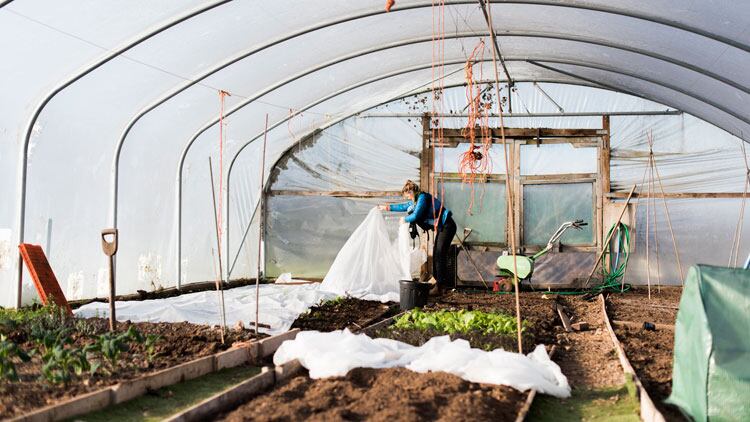
Running Wilsons on their own terms
Jan and Mary have Michelin’s attention having received a Green star in the 2022 guide, but to his and Mary’s disappointment a regular one remains elusive.
“I’m a chef. Of course, I want a fucking Michelin star,” is Jan’s refreshingly emphatic response to a question that often elicits a string of carefully worded cliches.
But while Jan and Mary covet a star, they are clear that they would not compromise their vision to get one. In acknowledging this, the pair demonstrate an understanding that they are not making things easy for themselves with their pioneering yet erratic approach to farm-to-table cuisine and their commitment to maintaining a relatively accessible price point.
“Wilsons is not and will never be a perfect restaurant. We will never have tablecloths and all the portions will always be a different because that’s how animals work”
It is understood that one of the reasons that Simon Rogan’s L’Enclume - probably the UK’s most influential proponent of the genre - took so long to ascend to three-star status is that its menu changes so much. Michelin like consistency and to be able to benchmark the same dishes from one visit to the next. That’s not easy for restaurants like Wilsons and chefs like Jan.
“If someone was to say, ‘here is the criteria, if you just do this you will get one’ and that criteria diverged us from the path that we are on, we would ignore it. Wilsons is not and will never be a perfect restaurant. We will never have tablecloths and all the portions will always be different because that’s how animals work,” Jan says looking across to the already nodding Mary for approval.
“The past three weeks on the farm might have been a total nightmare, but fundamentally we believe we are doing the right thing.”


